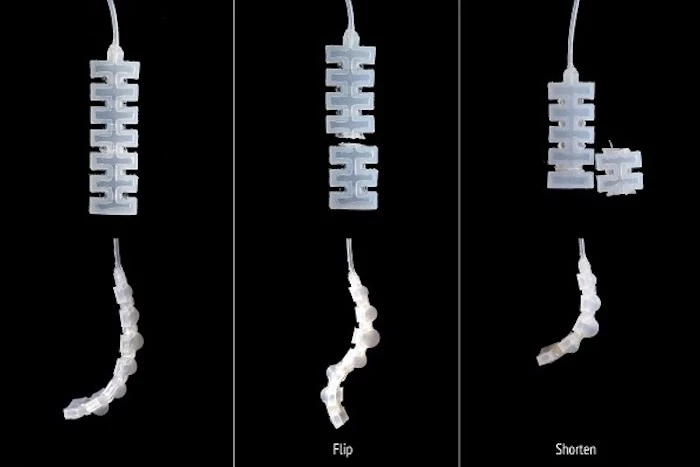When a regular material is torn or ruptured, it stays that way unless we tend to it with our hands or a machine to repair the damage. But a new class of materials is emerging that needs no such intervention, the latest example of which is a conductive polymer that can regain full functionality after being severed.
The material was developed by scientists at Carnegie Mellon University, who say it differs a little to many of the self-repairing materials under development so far. Where a lot of these rely on reagents that are released as the material is cut, flowing outward and repairing the rupture, the new type of polymer instead retains a solid shape throughout.
It is made of an autonomous self-healing polymer called polyborosiloxane, which can repair its own broken bonds without needing external stimuli such as light or heat. The team combined this polymer with multi-walled carbon nanotubes, which provide the material with both conductivity and an ability to self-heal busted electrical circuits.
The result is a smart, conductive polymer with unique characteristics that when cut apart and placed together, can reconnect with the seam in between gradually disappearing. In the eyes of the research team, this makes it suitable for a wide range of applications, including sensors or electrical devices that can be assembled or rearranged as needed.
As a demonstration of what it can do, the team fashioned the smart polymer into a type of keyboard that responds to touch. This was then sliced apart, with the resulting four soft controllers retaining their function independent of one another, and then able to be placed together to heal and join forces once again.

In another example, the team turned the polymer into a pneumatic actuator, the type that could be used to drive a robot. This actuator could be cut in the middle, with the halves rotated and reattached in a different orientation to give it an entirely different form factor, while retaining its proper function. Another idea is to use it as a reusable casts for broken arms that seals itself around the limb, or even adjusts itself over time to speed up healing.
"We're definitely trying to push the bounds of people's imaginations," says Lining Yao, leader of the research team.
You can see the smart polymer in action in the video below, while a research paper describing the technology is available here.
Source: Carnegie Mellon University




